For a brief period of around a decade, Canada and the United States got to enjoy some forbidden fruit from the United Kingdom. During the 1980s and 1990s, RV enthusiasts were able to buy quirky, aerodynamic campers from ABI Leisure Products of Ontario. Its camper, the ABI Award, was known for quality and good towing. Now, a camper inspired by the Canadian legend is back, and it’s bringing modern tech with it. This is the Citation Reward, and it’s a weird Canadian camper that can eliminate a couple of major headaches of RV ownership.
RV aerodynamics are being taken a lot more seriously now than in the recent past, and a lot of that has to do with electric vehicles. In the past, it didn’t matter if towing a large camper trailer sliced your truck’s fuel economy in half because gas was cheap and tanks were refilled in only a few minutes. But the world is different now. Gas isn’t as cheap as it used to be, and a lot of folks are now towing with hybrids or are dipping their toes into towing with EVs.
Several RV manufacturers have recognized the need for a camper that is still large enough to appeal to American buyers, but streamlined enough so that the owners of both internal combustion and electric tow vehicles don’t feel like they’re getting battered by gas pumps and public chargers.
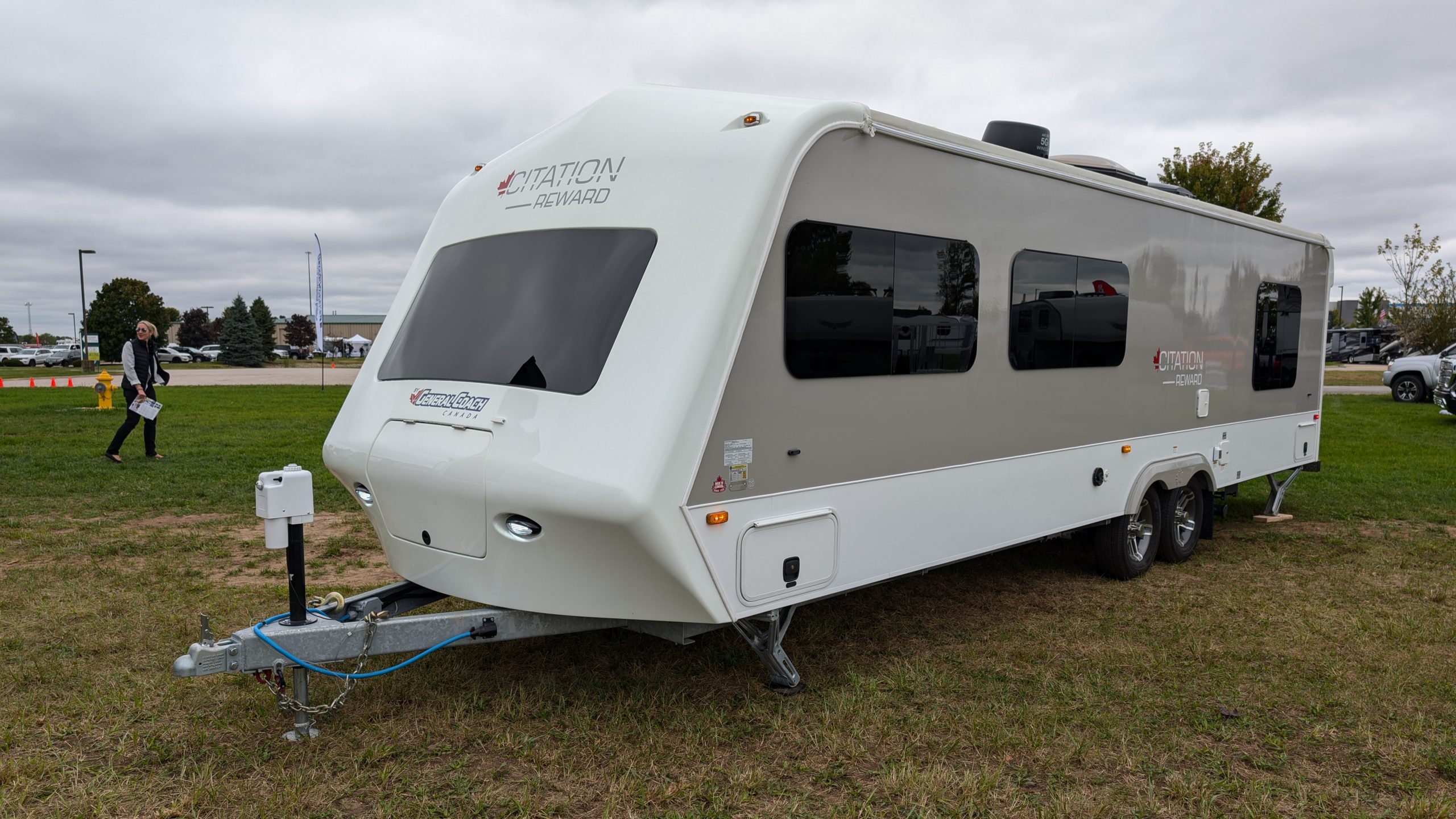
What makes the Citation Reward interesting is that these campers achieve this aero mission better than typical travel trailers, but do so with a shape that’s actually about 50 years old.
A Globetrotting Design
According to RV Lifestyle magazine, the Citation Reward is a product of General Coach Canada. However, its design is a nod to a Canadian RV legend, the ABI Award of ABI Leisure Products of Dunnville, Ontario. ABI Leisure Products began operations in 1985, and the Canadian camper had a design borrowed from ABI Caravans of England. The latter company was formed in 1972 when Ace Caravans and Belmont Caravans merged, initially creating Ace Belmont International. Later, the company abbreviated itself to ABI.
The ABI Award was known for its weird approach to aerodynamics. If you look at one of these campers (or caravans if you’re one of our European readers), you’ll note that they have a pretty pointy front cap and a roof with a high central peak. This is a major departure from the typical American travel trailer, which tends to have nearly vertical front walls and completely flat roofs.
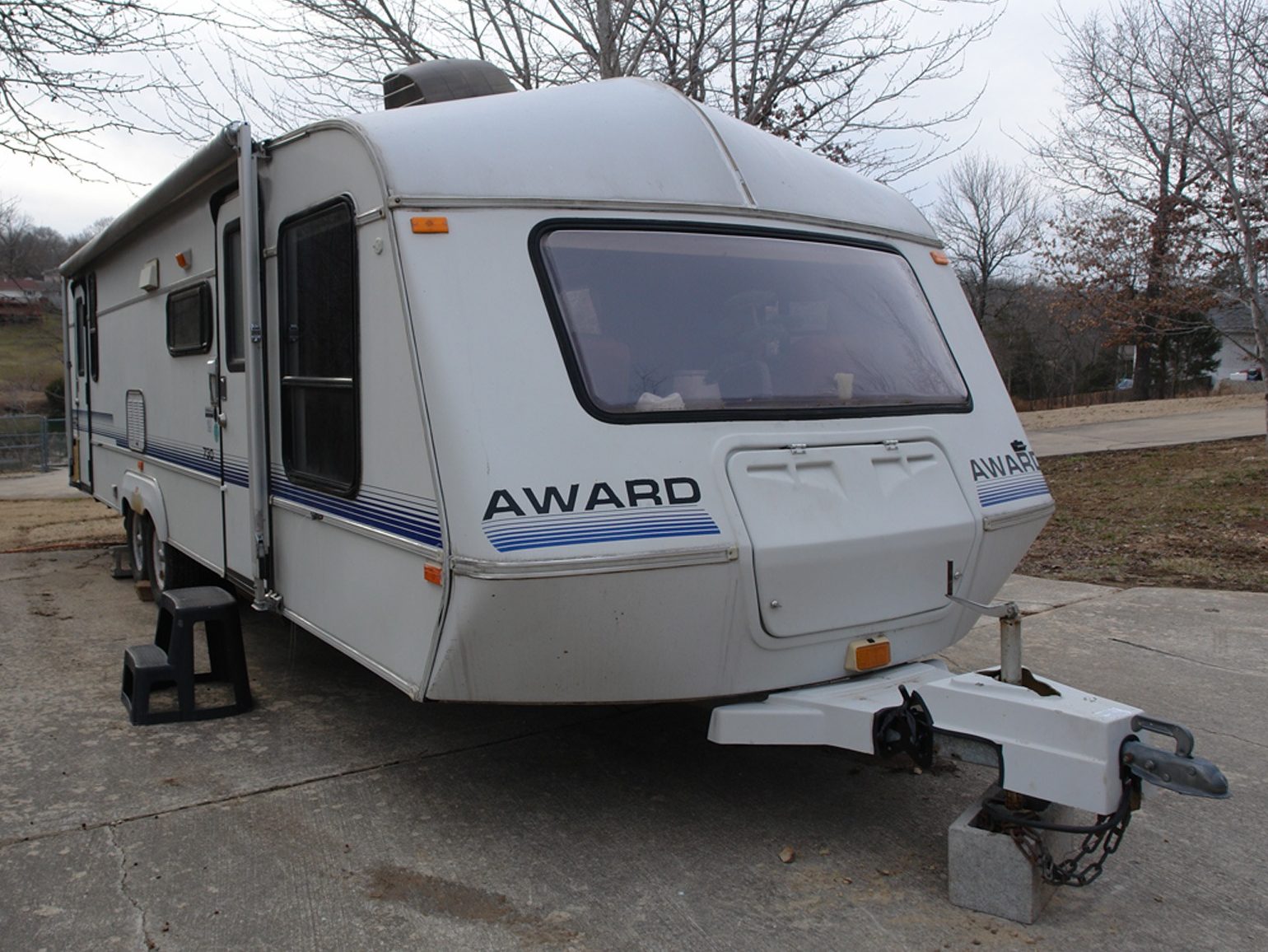
Award trailers were known for having fiberglass side panels, a lightweight galvanized frame, and interior appointments somewhat on the level of an Airstream. One of the big selling points of the Award was that it was lightweight, easy to tow, and handled well for a travel trailer. Reportedly, a 30-foot Award weighed only around 4,450 pounds dry, which is impressive.
ABI Leisure Products operated until 1996, when the company closed its doors. In 1998, former employees of ABI picked up the pieces. RV Lifestyle magazine continues:
The company was reorganized as Award Recreational Vehicles from 1998 – 2005, and parts were available from Diels Distribution in Dunnville, Ontario, until just a few years ago. The Award trailers were unique, and very popular among RV enthusiasts throughout North America, with high quality construction, excellent aerodynamics, and superb towing characteristics. More than 5,000 Award travel trailers were sold throughout North America and vintage Award trailers are still seen on the roads and in campgrounds, a testament to the durability of construction and the longevity of the design.
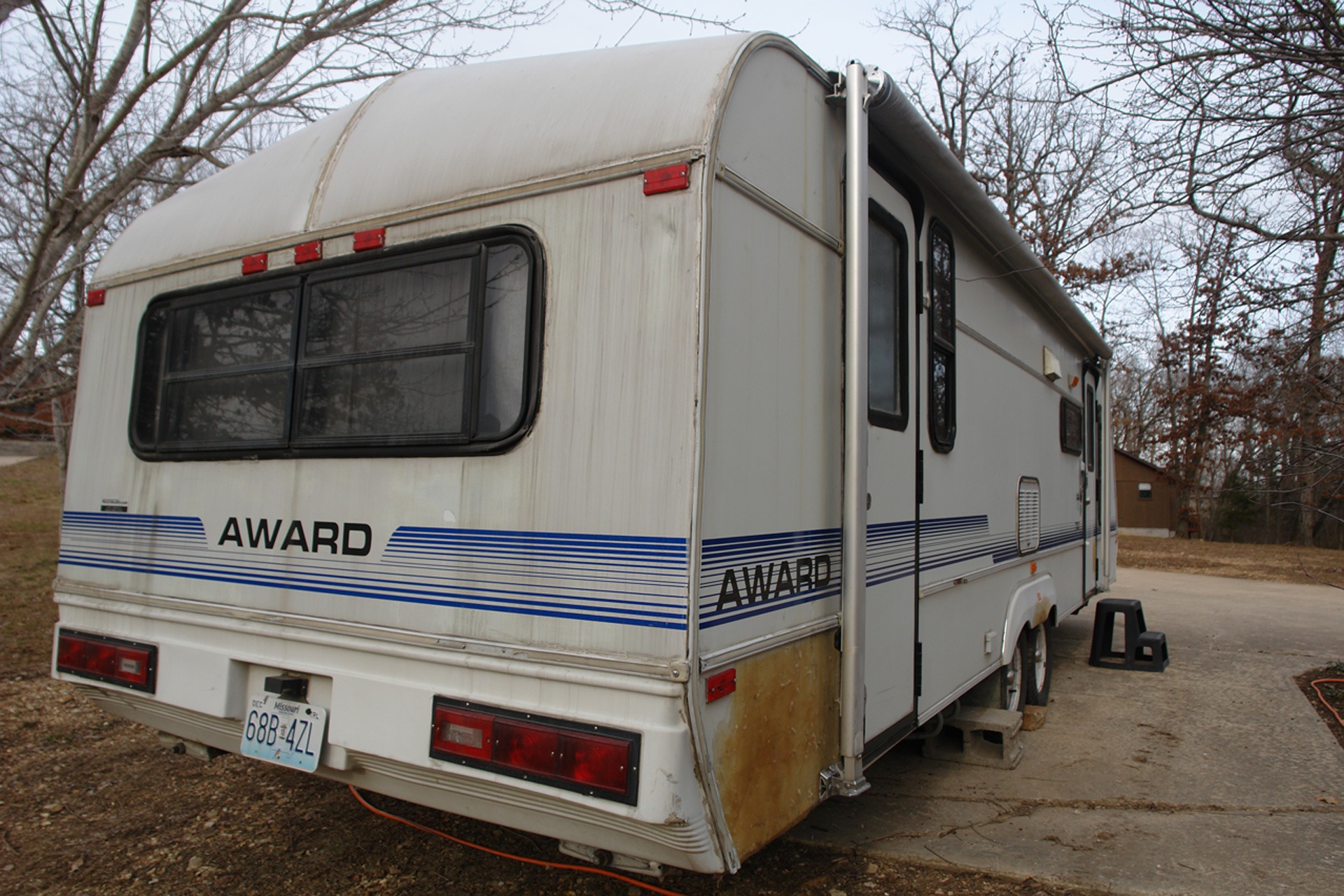
An archived version of Award Recreational Vehicles Inc.’s website states that there were a few reasons why the company’s trailers were known for their handling prowess. The company says that the peaky roof design actually creates downforce, and that the heaviest equipment in the trailer was centered near the axles. Further, the company says, the tongue on the frame was super long, and attached near the middle of the frame under the trailer rather than on the front of the frame like a typical camper.
According to Award camper owners, while the trailers were not built with a molded design, the fiberglass panels and roof panels were designed to overlap with each other to reduce the chances of water ingress. However, apparently, the original Award design is maintenance-intensive. Notably, they were prone to leaking water, especially at the window seals.
That brings us to the new campers that are inspired by the old Award design.
The New Citation Reward

Despite appearances, the Citation Reward is not a rebooted Award. Instead, General Coach Canada, a company that’s been slinging trailers, park models, mobile homes, and commercial trailers since 1950, decided to borrow the Award’s design, but improve on where the old campers fell short.
RV Lifestyle magazine says that General Coach Canada originally stopped building its Citation line of travel trailers in 2008, then got back into the groove of building travel trailers in 2018. The Citation Reward was unveiled in 2020, and these campers have been slowly leaking south across the Canada-U.S. border since. I actually saw the trailers on your screen today about a year ago, but I hadn’t actually written my story yet.
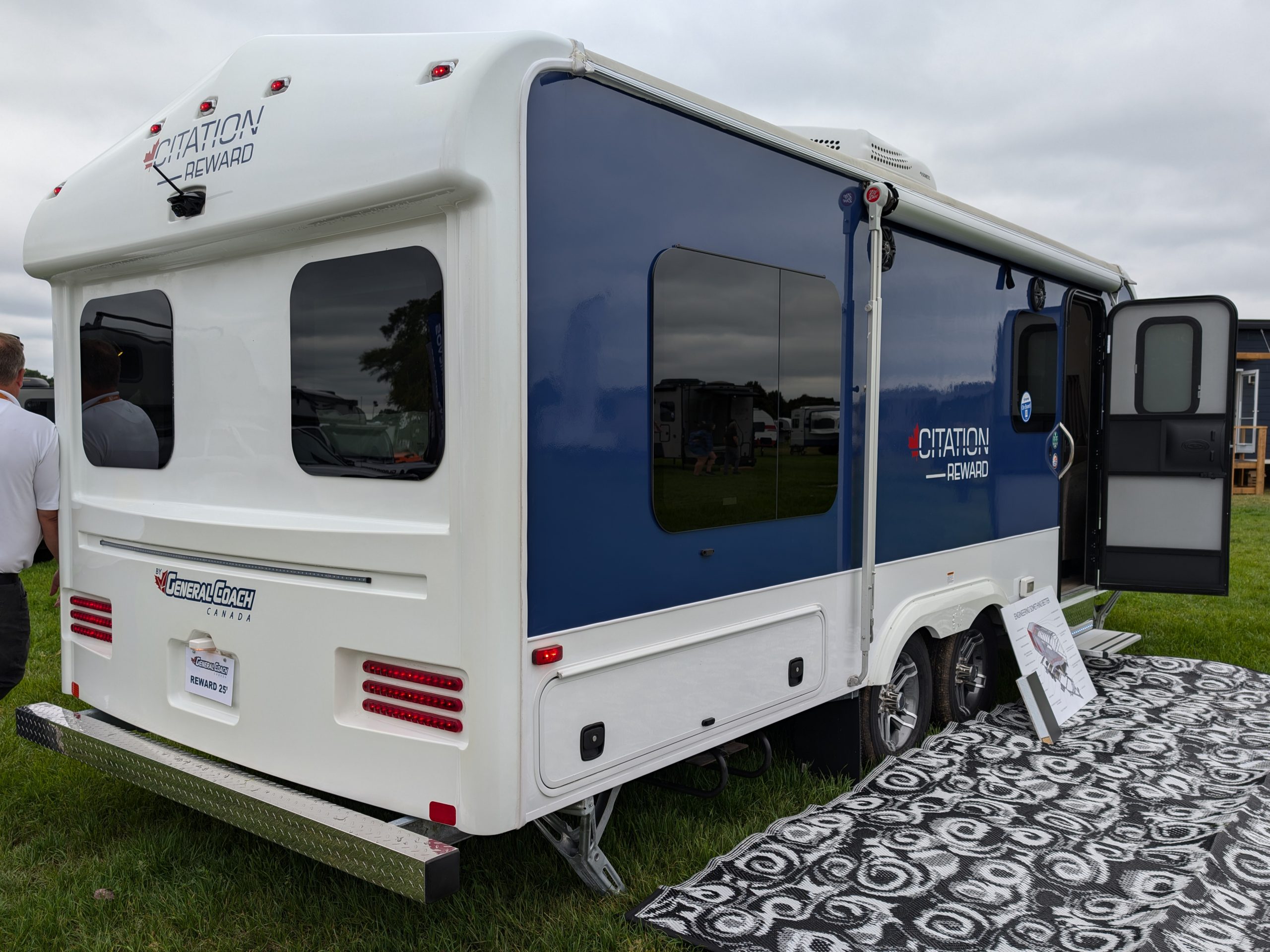

The Citation Reward starts with a seven-inch Z-channel huck bolt chassis, which is coated in commercial-grade epoxy paint. On top of it sits a vacuum-bonded fiberglass floor with an Azdel composite subfloor and vinyl flooring on top. The chassis rides on a Torflex rubber torsion suspension and sports sharp 15-inch alloy wheels.
As for the body, it’s made out of a welded aluminum skeleton with Azdel composite wall panels attached to it—no lauan structural plywood here—and fiberglass panels all around for the exterior body. It’s noted that, while the body is not molded fiberglass, General Coach does have the fiberglass overlapping itself and the roof, so that, ideally, it has less of a chance of leaking.
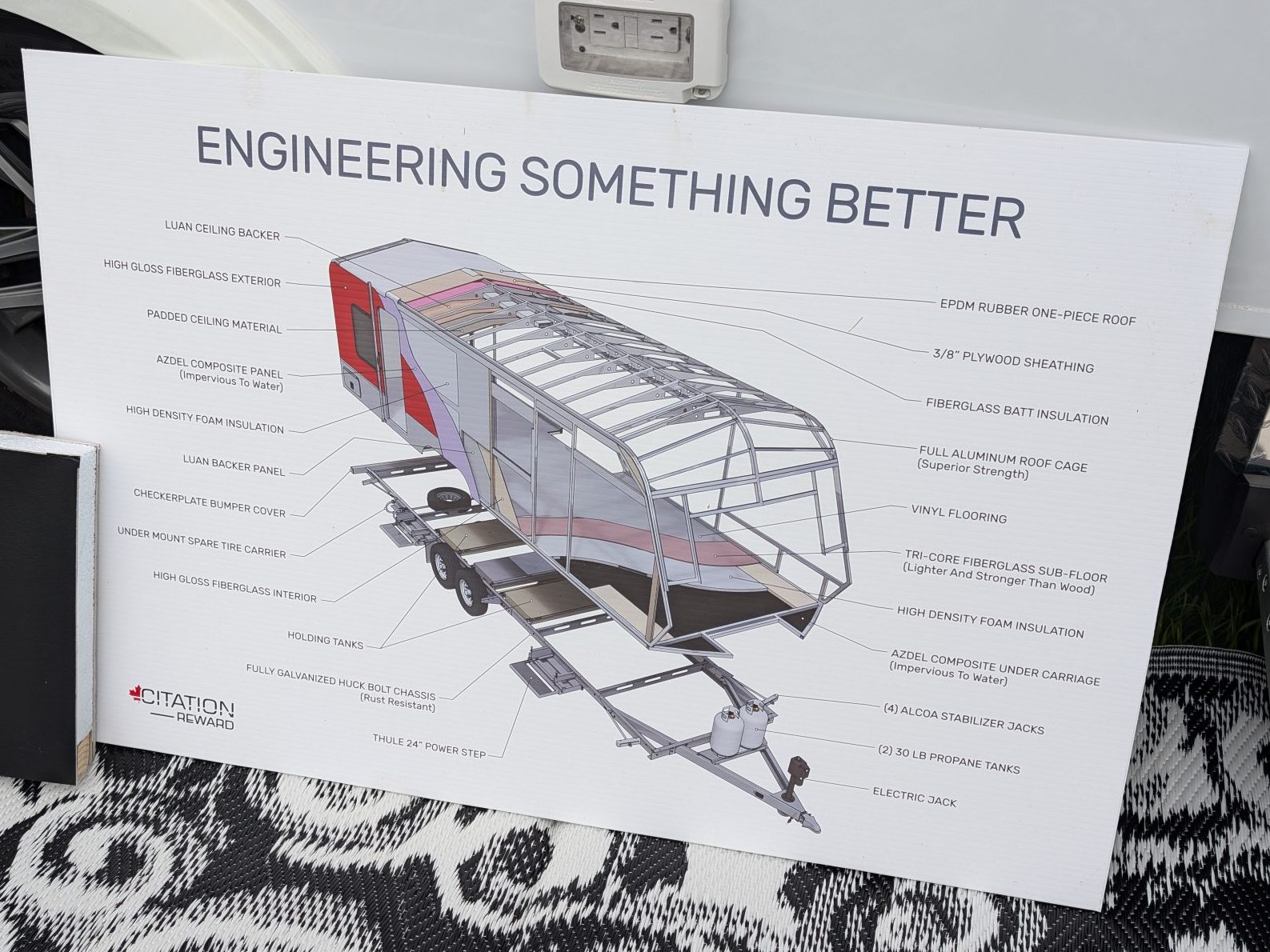
As for that roof, its structure is made out of welded aluminum, which is very good. Less good is the fact that the outer roof covering is EPDM rubber with plywood underneath.
These panels are painted in a two-tone, automotive-style gloss finish. Something I like about the entry doors of these trailers is that, like some Fords, you can unlock the door by putting in a code rather than a key. Neat!



Finally, General Coach decided to pay a lot of attention to the windows, because that’s what sort of sucked on old Award trailers. To avoid repeating the mistakes that ABI made, General Coach decided to use automotive-grade glazing. The front window is attached to the Citation Reward in the same way your car’s windshield is.
Personally, I thought that the trailers that I toured were cuts above the typical travel trailer that comes out of the factories in the United States. I am partial to molded fiberglass designs and all-metal designs, but it does look like General Coach at least did something better than the typical camper.


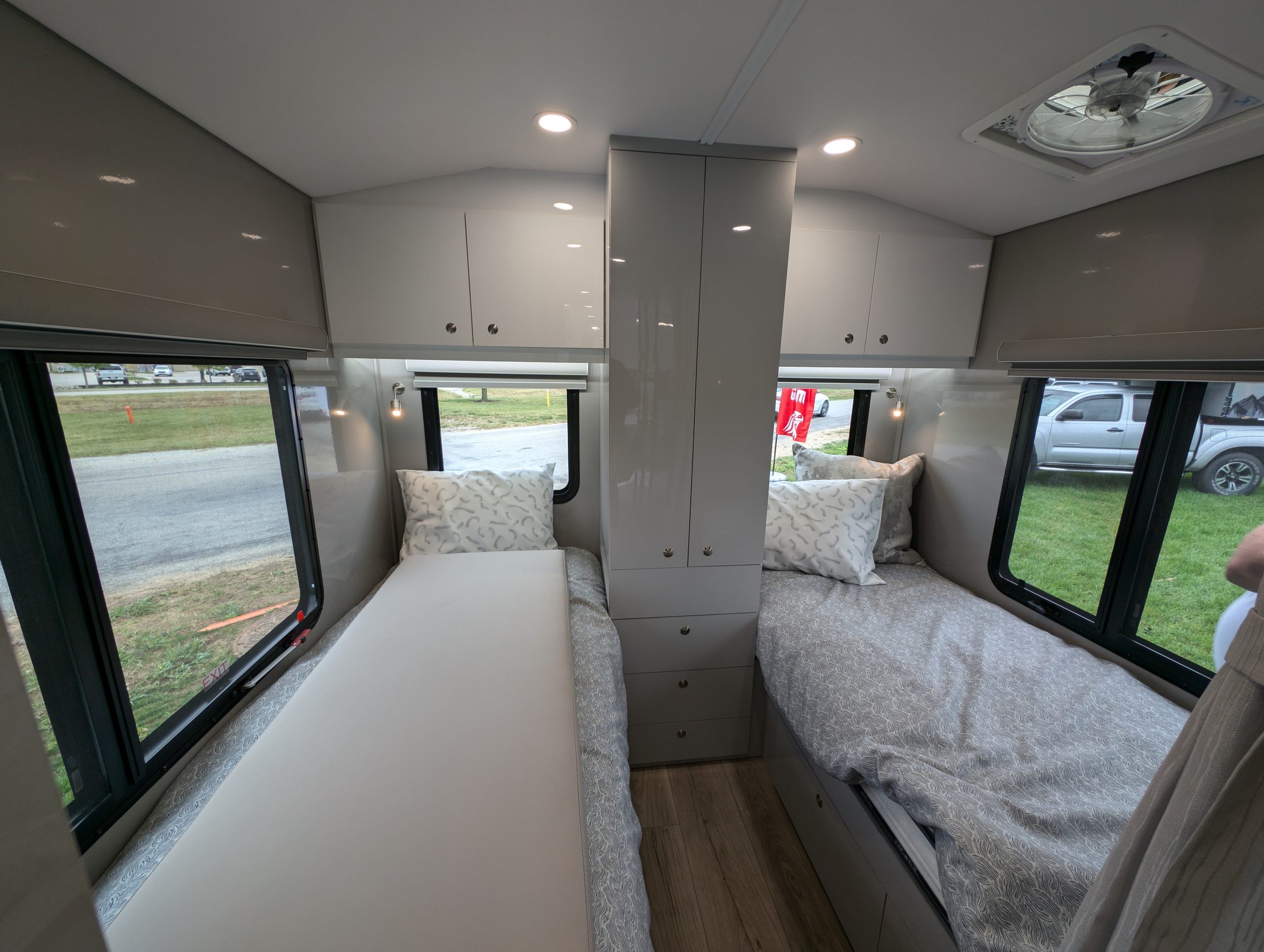
What I found interesting with the interior was that the perimeter fiberglass walls were painted in the same glossy finish as the exterior. This gave the walls a little bit of a shine when hit by light, but thankfully, the walls aren’t so glossy that you’d be blinded by them on a sunny day. I actually like the painted walls more than the cheap-looking wall coverings that typical campers have.
The materials used in these interiors were nothing special. Plywood is used for furniture and cabinetry, DuPont Corian is used for countertops, a laminate table is used for the dinette, and an Olympia soft headliner is used for the ceiling. There are some nice touches like soft-close hinges, soft-close drawers, and roller blinds. While the materials weren’t out of this world, they did feel nice to the touch. Overall, it felt like the people who put this trailer together actually cared about its fit and finish, which is good.
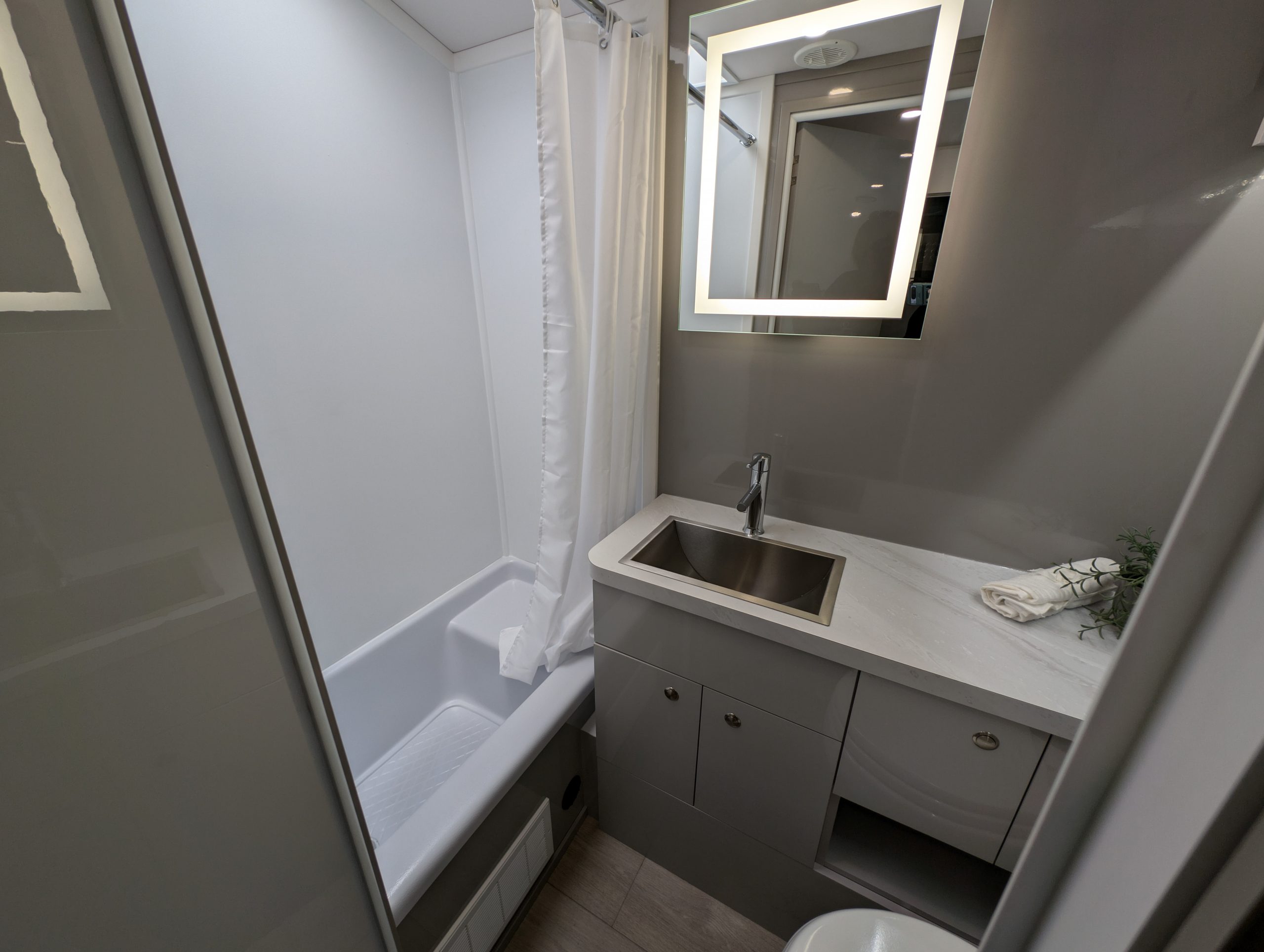
Sadly, lauan is used in exactly two places in the interior. The interior headliner attaches to lauan board, as do the glossy fiberglass interior panels. That’s disappointing, but at least it’s not being used for anything structural.
The features list is pretty decent, and includes an induction cooktop, a convection microwave, LED accent lighting, a stainless sink, a porcelain toilet, a combo water heater and furnace from Truma, a black tank flushing system, and more. Additional standard features include 200 watts of solar panels and a 12-volt lithium house battery.
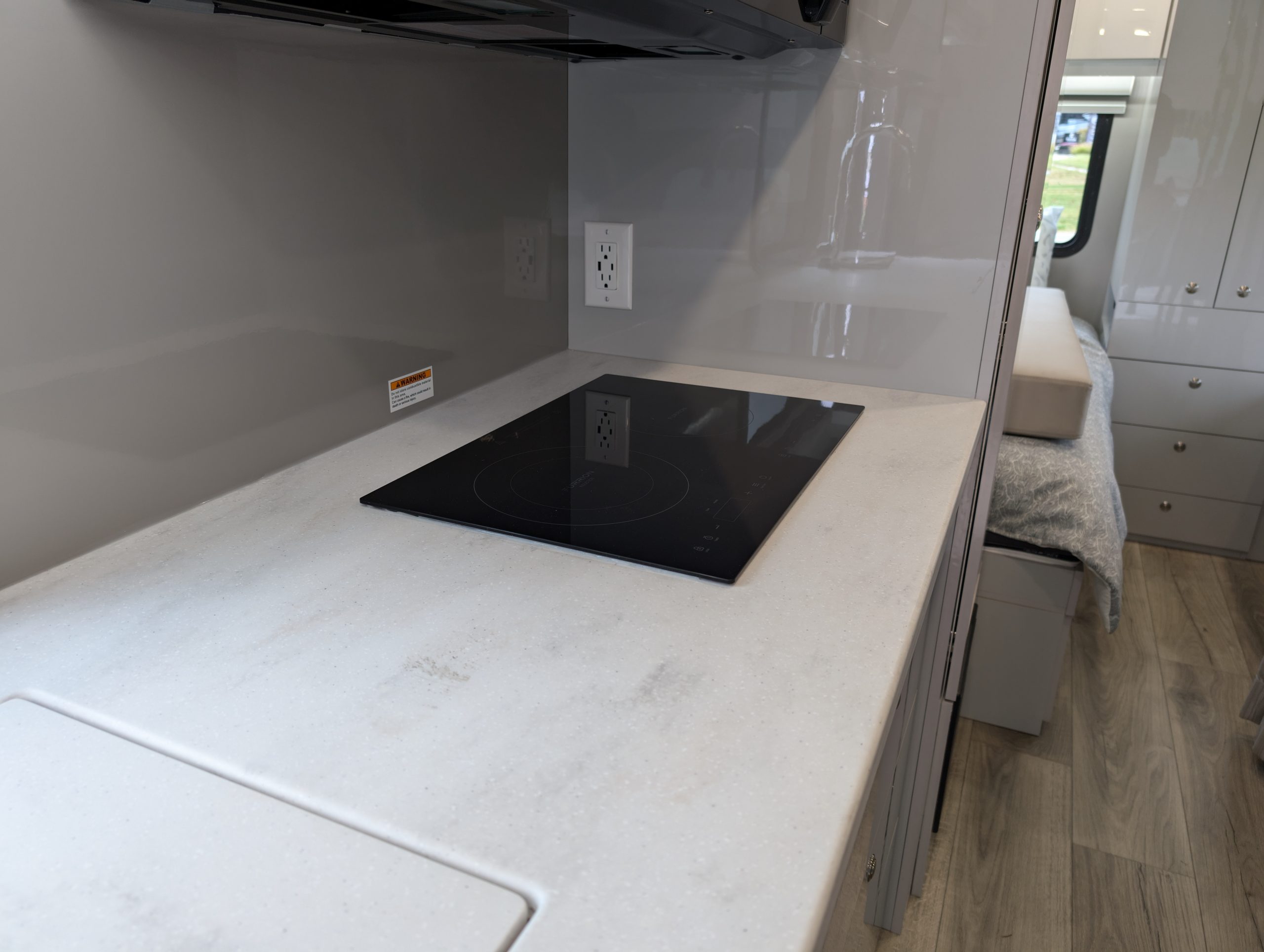
General Coach says that the Citation Reward is supposed to be something like the Canadian version of an Airstream, and I can see it. Like an Airstream, the Citation Reward doesn’t even have slides.
The Citation Reward is sold in 25’ 11”, 28’ 8”, and 31’ 6” lengths, and the “box,” or living space, is three feet shorter than the noted total length. Empty, the 25-footer weighs 5,742 pounds, the 28-footer weighs 6,057 pounds, and the 31-footer comes in at 6,590 pounds. All versions have a 28-gallon tank for fresh water and 32 gallons for gray and waste water. Dry hitch weights range from 485 pounds to 608 pounds.
Quality Comes At A Cost

I came away liking the Citation Reward. General Coach implemented a lot of great ideas here. The composite walls, composite floors, aluminum roof, and metal framing should mean that the intense water damage of the past should remain in the past. The aerodynamics should also be better for your tow vehicle.
This trailer is also a perfect example of the take that I recently wrote about taking lauan out of campers. While the trailer doesn’t completely eliminate the wood’s use, which is disappointing, it does minimize the material’s use to what’s more or less cosmetic purposes. I think my bigger disappointment is that General Coach went through the work to build a metal roof, and then capped it with rubber and plywood. Why not just continue the use of fiberglass?
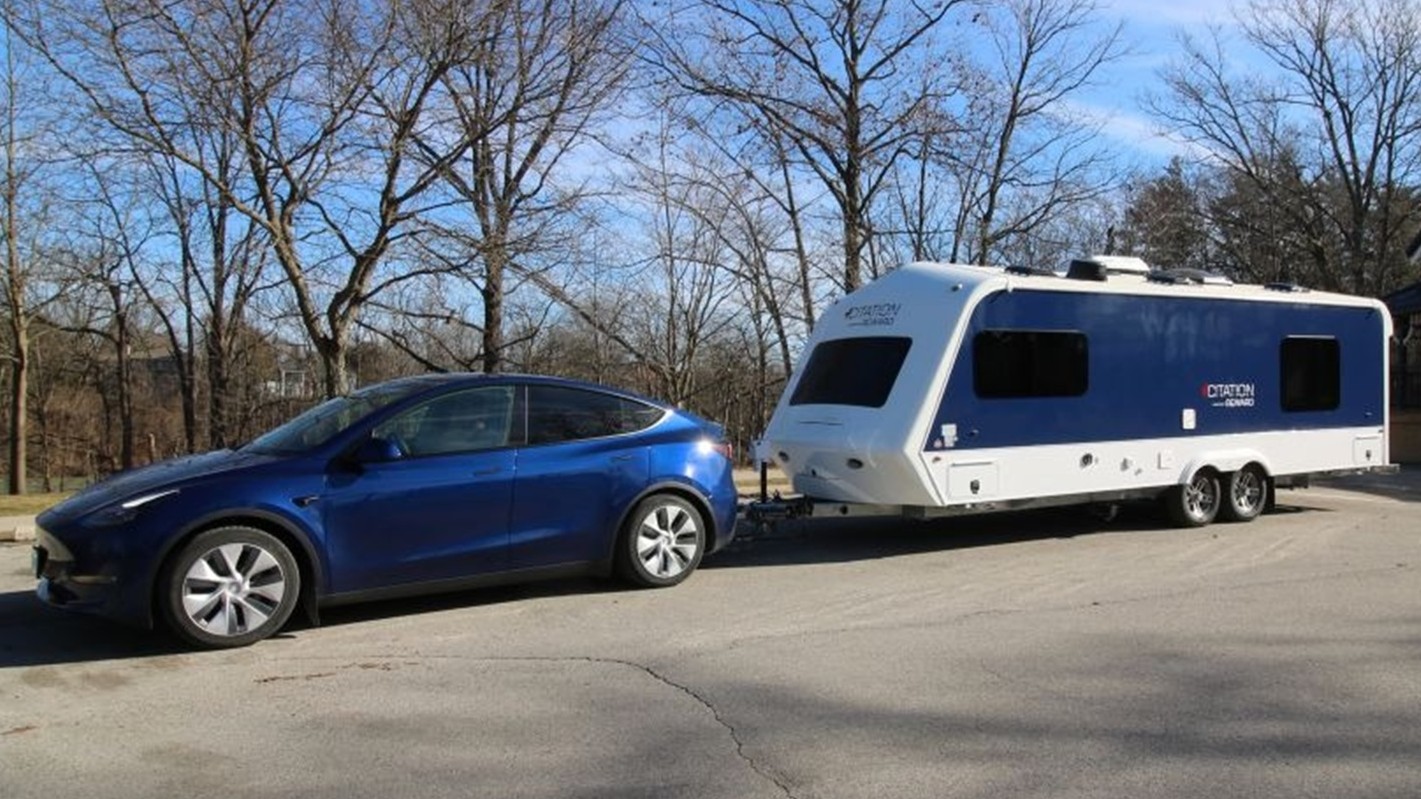
Also, I am a bit confused by this image above that I found at a dealership. That’s a Citation Reward 28, which General Coach says weighs at least 6,057 pounds. A Tesla Model Y, at least here in the States, tows no more than 3,500 pounds. This same dealership has published videos with RV Lifestyle magazine showing them towing a different Citation Reward with a Tesla Model S.
Update: As it turns out, these Teslas are modified, which makes a lot more sense. Still, don’t try that with your stock Tesla!
Sadly, all of General Coach’s changes to the Award design have made for a heavier trailer. But I think the changes will be welcome. A harder pill to swallow would be the price. General Coach says to refer to a local dealer for pricing. Okay. Well, here’s a dealership in Canada selling a Citation Reward 31 for $141,999. That’s $102,853 USD at current exchange rates. The same dealer has a Citation Reward 28 for $131,999, or $95,609 USD.
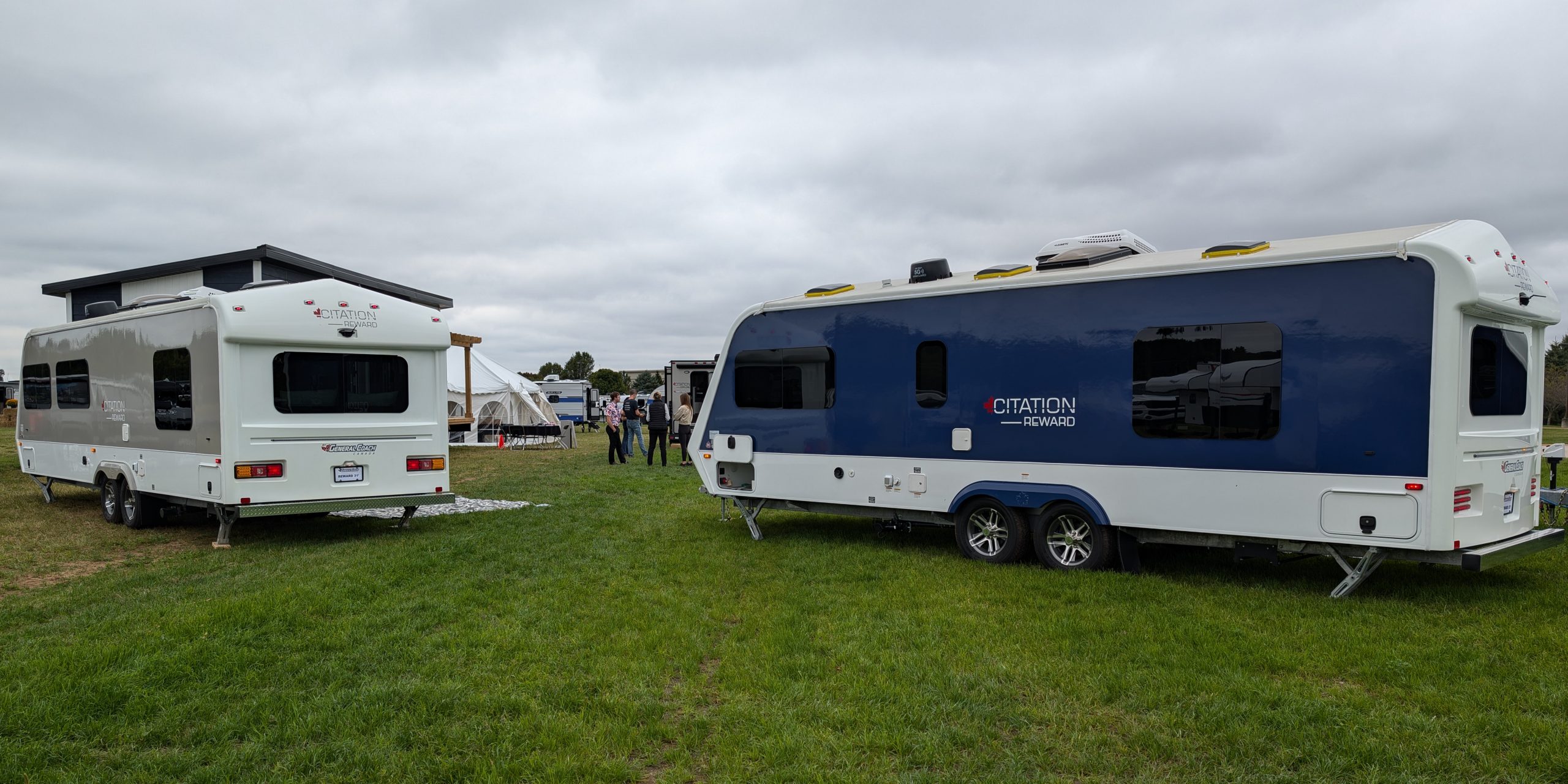
I suppose these prices make sense since General Coach fancies itself as the Canadian Airstream. But at the same time, I doubt these campers have quite the same name recognition or iconic looks that permit Airstream to demand over $100,000 for its trailers. At the very least, General Coach is an old company, so it’s not like a startup that might disappear in the middle of the night.
Thankfully, the Citation Reward is certified for sale in the United States, but getting one that’s already across the border can get interesting. As of publishing, there are only two General Coach distributors in the United States: Pearl Lake Beach of South Beloit, Illinois, which is a park model dealership and resort, and Pikes Peak RV of Colorado Springs, Colorado. General RV has dozens of dealers just past the border in Canada. Neither dealer has any Citation Rewards in stock.
If you can get past the high price and absolutely pitiful dealer network, I think the Citation Reward could be a neat pick. It seems to be a cut above most campers and has a unique design that will probably have people turning their heads at campgrounds. Is it the Canadian Airstream? I’m not sure, but it is pretty cool.
Support our mission of championing car culture by becoming an Official Autopian Member.

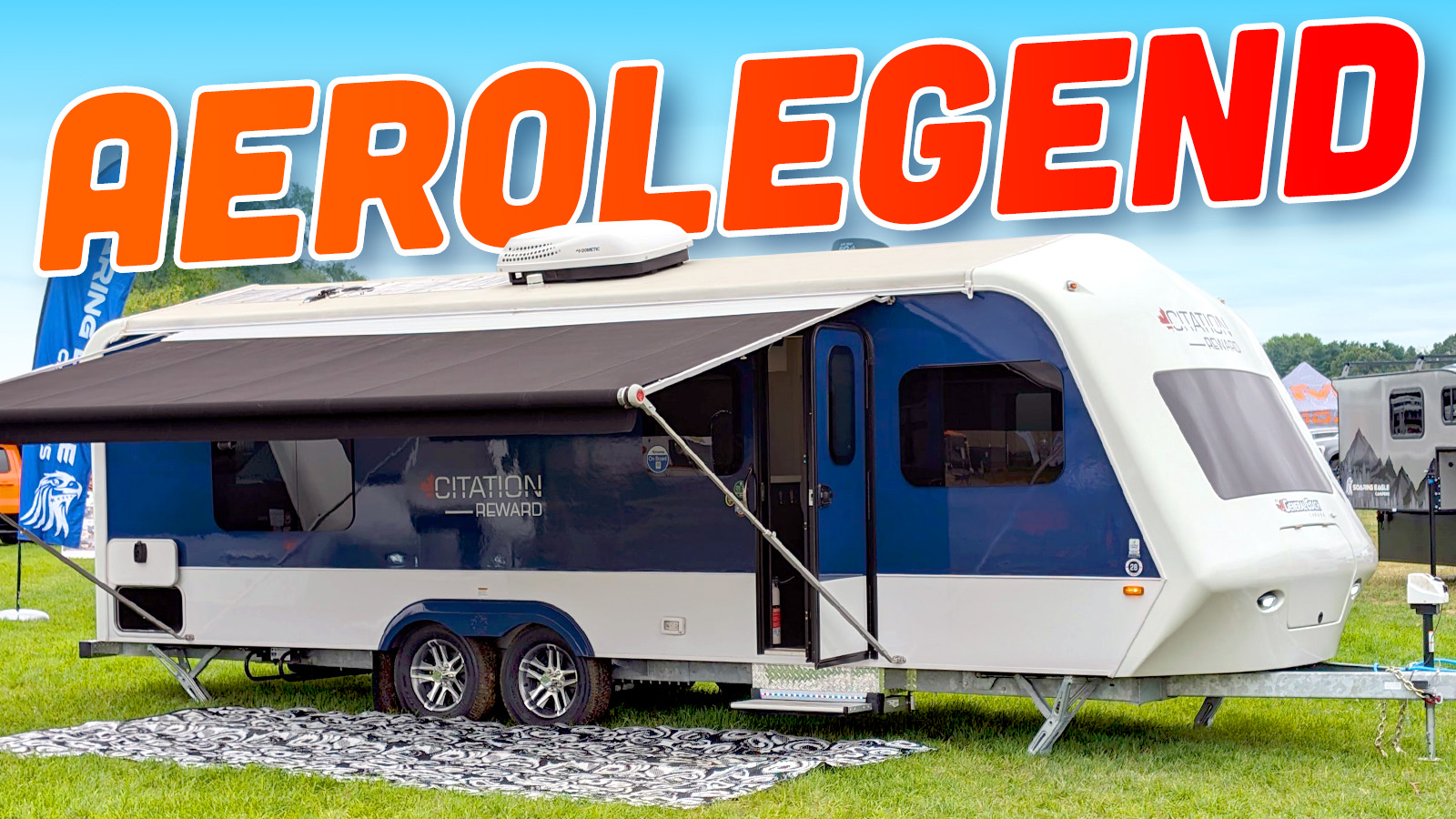




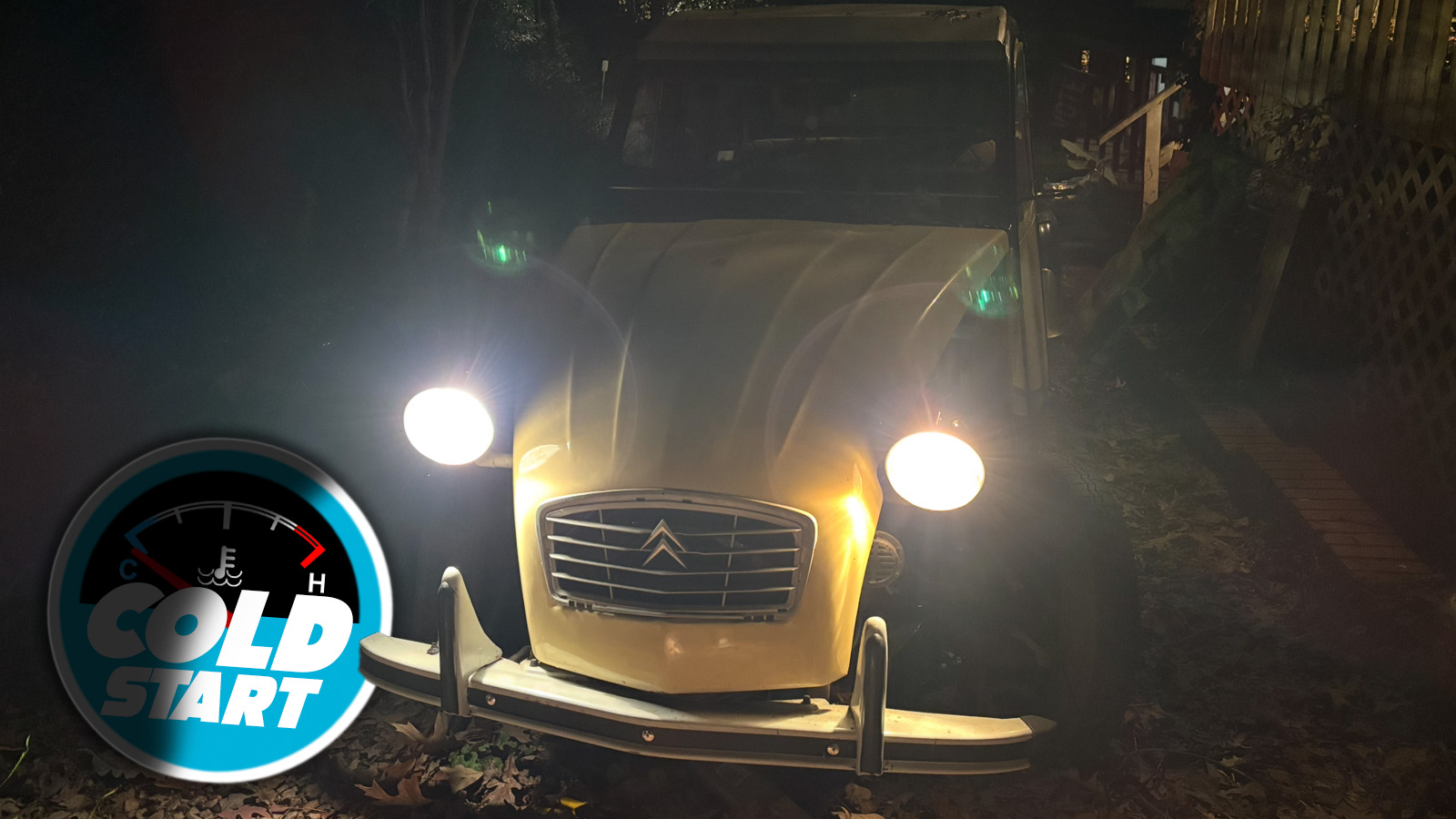
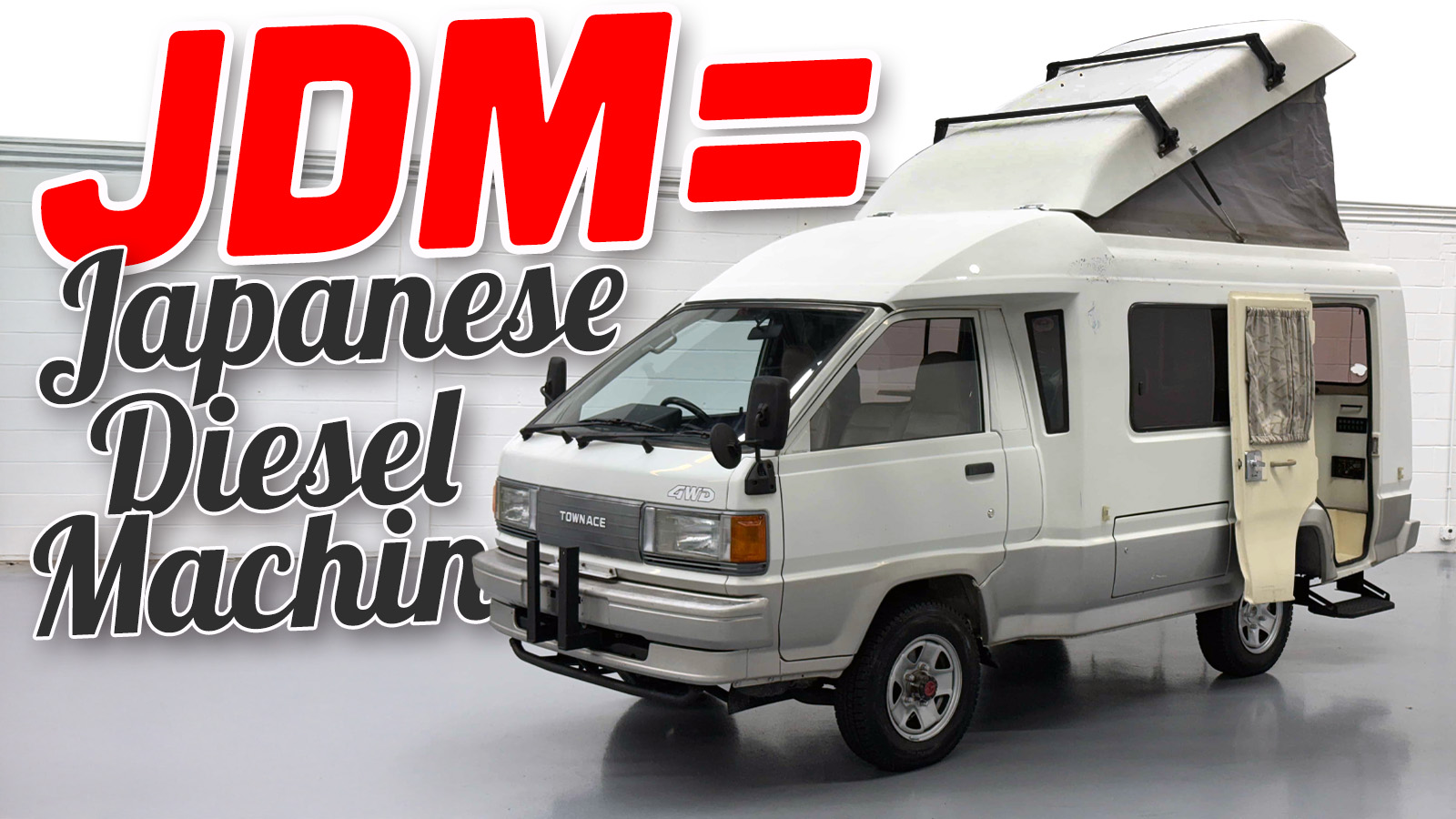
Seems like you’d want to put your money into an FRP roof and then have the walls be whatever cheap crap, instead of the other way around.
I hope it’s not built like a Chevy…Citation! Ha ha…actually it looks like it’s built pretty well and decent enough. I really like the whole interior layout and design…also like the 2 tone exterior (better than the normal “swoops” patterns, which I really don’t mind anyway) I also like the focus on aero. This is VERY expensive though and would not buy. I’m more of a sleep on rock outside kind of person ha ha…well, more like in a sleeping bag in a…”VAN DOWN BY THE RIVER!”
Cares about aerodynamics, puts giant ac on the roof.
When will these guys move to minisplit AC’s on the back with a head somewhere in the camper?
OOF. That’s Brinkley money.
I was interested until we got to the price tag. There’s decent stuff closer to $60,000, and some fiberglass trailers are closer to $40k. The aerodynamics and the aluminum and fiberglass structures are good, $100,000 price is not so good.
Well, the math works out. Decent stuff $60k. Fiberglass trailer $40k. Total price $100k….
My grandparents have owned an Award for almost 30 years now. My parents borrowed it one summer when I was 13 and we toured from Wisconsin to Yellowstone. Saw Mt Rushmore, camped all over South Dakota and Wyoming and SE Montana.
That camper was awesome! Slept us all comfy and pulled through the mountains behind my dad’s GMT800 with ease. One of the best trips I’ve ever been on
I was interested until it got to the $101K part of the deal. Since most camping is done at campgrounds of some descrotion you then get to pay to park there, and by the time you get to that point Kozy Kabins or Blue/Green is starting to make sense.
“To avoid repeating the mistakes…General Coach decided to use automotive-grade glazing.” I’m astonished to think that all RVs don’t already do this. No wonder they’ve earned the reputation for catastrophic leaks.
Who came up with the most terrible idea to put a cabinet between the two -now definitely- single beds? Even a good night kiss is made impossible. In the europe styled caravans you also see a lot of two single beds, but with the possibility to fill the gap in between to make it a real king-size bed.
And it looks like crap there too.
Reminds me of that damn monolith thing from 2001 A Space Odyssey…
Thanks, Mercedes, for covering this, what an awesome trailer! I’ve always been fascinated with ABI’s static caravans in England. How they manage to cram 3 bedrooms, 2 baths, and have actual livability into a 10X40 box is amazing. They invented the tiny home in my opinion.
Yeah, you have to go to 60ft to get all that here, you might be able to find an American 40 footer with 2 beds and 1.5 baths, but that would be the limit
British caravans just have such a different look to them from American ones, I was expecting there to have been some connection before clicking onto the article. Its generally pretty amazing how little they tend to weigh vs US campers of the same size and comparable equipment, or, more accurately, I tend to wonder where all our extra weight comes from
McDonalds
Question: Article says no luan, but manufacturer’s illustration at RV show says luan in both walls and roof. Explain? Is it about the “structural” qualifier?
Correct. It’s the backing material for the interior wall and the interior ceiling, but it’s not being used to hold together the exterior walls like in a typical stick build. Not my favorite construction method for sure, but still a step above typical.
Granted, the bar is very low.
Ok, so it looks like fiberglass inner wall liner, luan backer, then aluminum frame. So the luan isn’t holding the walls and roof up, the aluminum is, but if the inner wall liner is glued to the luan which is glued to the frame, you’re still going to be mighty unhappy if the luan gets wet and delaminates I guess.
Yay! The system works! Thanks for taking my suggestion, I enjoy seeing Canadian-centric articles (for obvious reasons).
Have you done one on the ubiquitous Boler trailer yet?
Dunnville mentioned! One of the few times my hometown ever gets mentioned positively!
I was 5 in 1996 when they closed up the ABI factory across from what was at the time the Bicks Pickles factory. It stood vacant for a long time. It’s an empty lot now.
What I had heard back at the time was that the Award trailers were great but the floors tended to rot out (if the windows were leaking that would explain that).
Hey now, DeBoss Garage is set up there as well!
Although the induction cooktop is a definite plus…
…after tariffs you’re firmly in Airstream Flying Cloud 27FB territory – before we get to dealer discounts.
I believe I could probably redo the Airstream kitchen counter to plug in my own induction cooktop.
I wonder if that Tesla is a Can-Am Towing setup. They’re known for using custom setups to let smaller vehicles tow better at or above their rated capacity. They’re located not that far away in London.
I’ll be dipped, that’s what’s going on here! Weird that the RV Lifestyle article makes absolutely no mention of modifications.
Buddy picked one of these up that had been sitting in a field for 20 years- no roof leaks and the frame wasn’t too rusty only the surface- now if only the mice had stayed away
These are built in the small town (1300 people) I grew up in, Hensall Ontario. Better known as the white bean capital of Canada. There’s also a company in the town next door, Exeter, called Northlander that makes park model RVs. General Coach is a neat company that’s been through ups and downs, and a decent size employer in a town better known for agriculture than manufacturing. Thanks for highlighting this and taking me back!
I love that there are still builders out there doing different things, but that price is definitely yikes.